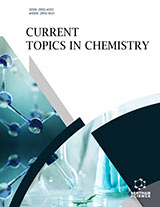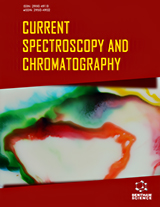Abstract
Sample preparation is a crucial step in the analytical process. The solid phase absorbents attracted more interest in research on the preparation of samples, because they have a crucial role in achieving a high effectiveness of the purification and enrichment in the analysis of trace compounds present in complex matrices. Carbon nanotubes (CNTs) exhibit unique properties for a variety of processes and applications. The combination of structure, dimensions and topology allow for their use in Analytical Chemistry, primarily as a matrix in a matrix assisted laser desorption ionization, stationary phase in both gas chromatography (GC) and high performance liquid chromatography (HPLC) and as sorbents in solid phase extraction (SPE). The aim of this review is to provide a broad overview of recent applications of CNTs for the isolation of pharmaceuticals from environmental, biological and food samples before chromatographic analysis, in the period from 2006 to 2015.
Keywords: Carbon nanotubes, dispersive solid phase extraction, magnetic carbon nanotubes, pharmaceuticals, solid-phase extraction, stir bar sorptive extraction.
Current Analytical Chemistry
Title:Recent Applications of Carbon Nanotubes as Sorbents for the Extraction of Pharmaceutical Residues
Volume: 12 Issue: 4
Author(s): Monika Paszkiewicz, Magdalena Tyma, Aleksandra Jakubus and Piotr Stepnowski
Affiliation:
Keywords: Carbon nanotubes, dispersive solid phase extraction, magnetic carbon nanotubes, pharmaceuticals, solid-phase extraction, stir bar sorptive extraction.
Abstract: Sample preparation is a crucial step in the analytical process. The solid phase absorbents attracted more interest in research on the preparation of samples, because they have a crucial role in achieving a high effectiveness of the purification and enrichment in the analysis of trace compounds present in complex matrices. Carbon nanotubes (CNTs) exhibit unique properties for a variety of processes and applications. The combination of structure, dimensions and topology allow for their use in Analytical Chemistry, primarily as a matrix in a matrix assisted laser desorption ionization, stationary phase in both gas chromatography (GC) and high performance liquid chromatography (HPLC) and as sorbents in solid phase extraction (SPE). The aim of this review is to provide a broad overview of recent applications of CNTs for the isolation of pharmaceuticals from environmental, biological and food samples before chromatographic analysis, in the period from 2006 to 2015.
Export Options
About this article
Cite this article as:
Paszkiewicz Monika, Tyma Magdalena, Jakubus Aleksandra and Stepnowski Piotr, Recent Applications of Carbon Nanotubes as Sorbents for the Extraction of Pharmaceutical Residues, Current Analytical Chemistry 2016; 12 (4) . https://dx.doi.org/10.2174/1573411012666151009194721
| DOI https://dx.doi.org/10.2174/1573411012666151009194721 |
Print ISSN 1573-4110 |
| Publisher Name Bentham Science Publisher |
Online ISSN 1875-6727 |
 31
31 1
1 1
1 1
1
- Author Guidelines
- Bentham Author Support Services (BASS)
- Graphical Abstracts
- Fabricating and Stating False Information
- Research Misconduct
- Post Publication Discussions and Corrections
- Publishing Ethics and Rectitude
- Increase Visibility of Your Article
- Archiving Policies
- Peer Review Workflow
- Order Your Article Before Print
- Promote Your Article
- Manuscript Transfer Facility
- Editorial Policies
- Allegations from Whistleblowers
- Announcements
Related Articles
-
Measurement and Mapping of Retinal Leakage and Retinal Thickness - Surrogate Outcomes for the Initial Stages of Diabetic Retinopathy
Current Medicinal Chemistry - Immunology, Endocrine & Metabolic Agents Olive Leaf Extracts Act as Modulators of the Human Immune Response
Endocrine, Metabolic & Immune Disorders - Drug Targets Inhibition of Angiogenesis as a Treatment Strategy for Neuroblastoma
Current Cancer Therapy Reviews Acknowledgment to Contributors
Recent Patents on Inflammation & Allergy Drug Discovery Insulin-Like Growth Factor 1 Receptor Targeted Therapeutics: Novel Compounds and Novel Treatment Strategies for Cancer Medicine
Recent Patents on Anti-Cancer Drug Discovery Block Copolymers for Drug Delivery Nano Systems (DDnSs)
Current Medicinal Chemistry Thiazolidinediones Anti-Inflammatory and Anti-Atherosclerotic Effects in Type 2 Diabetes Mellitus
Anti-Inflammatory & Anti-Allergy Agents in Medicinal Chemistry PUFA for Human Health: Diet or Supplementation?
Current Pharmaceutical Design Association of Lower Adiponectin Plasma Levels, Increased Age and Smoking with Subclinical Atherosclerosis in Patients with HIV-1 Infection
Current HIV Research Crystallization and Preliminary X-Ray Crystallographic Studies of Human Autocrine Motility Factor
Protein & Peptide Letters Interactions Between Oxicams and Membrane Bilayers: an Explanation for Their Different COX Selectivity
Medicinal Chemistry Fruit as Potent Natural Antioxidants and Their Biological Effects
Current Pharmaceutical Biotechnology The Modulating Effects of Endogenous Substances on Drug Metabolising Enzymes and Implications for Inter-Individual Variability and Quantitative Prediction
Current Drug Metabolism Probiotics Role in Allergic Illness
Current Respiratory Medicine Reviews A Study of Tryptophan Metabolism via Serotonin in Ventricular Cerebrospinal Fluid in HIV-1 Infection Using a Neuroendoscopic Technique
Current HIV Research Transactivation of ErbB Receptors by Leptin in the Cardiovascular System: Mechanisms, Consequences and Target for Therapy
Current Pharmaceutical Design The Critical Role of Vascular Endothelial Growth Factor in Tumor Angiogenesis
Current Cancer Drug Targets Appraisal of AβPP Transgenic Mice as Models for Alzheimers Disease Amyloid Cascade
Current Medicinal Chemistry - Immunology, Endocrine & Metabolic Agents Human Chorionic Gonadotropin: A Model Molecule For Oligopeptide-Based Drug Discovery
Endocrine, Metabolic & Immune Disorders - Drug Targets Consequences of Aberrant Insulin Regulation in the Brain: Can Treating Diabetes be Effective for Alzheimers Disease
Current Neuropharmacology


























